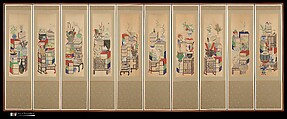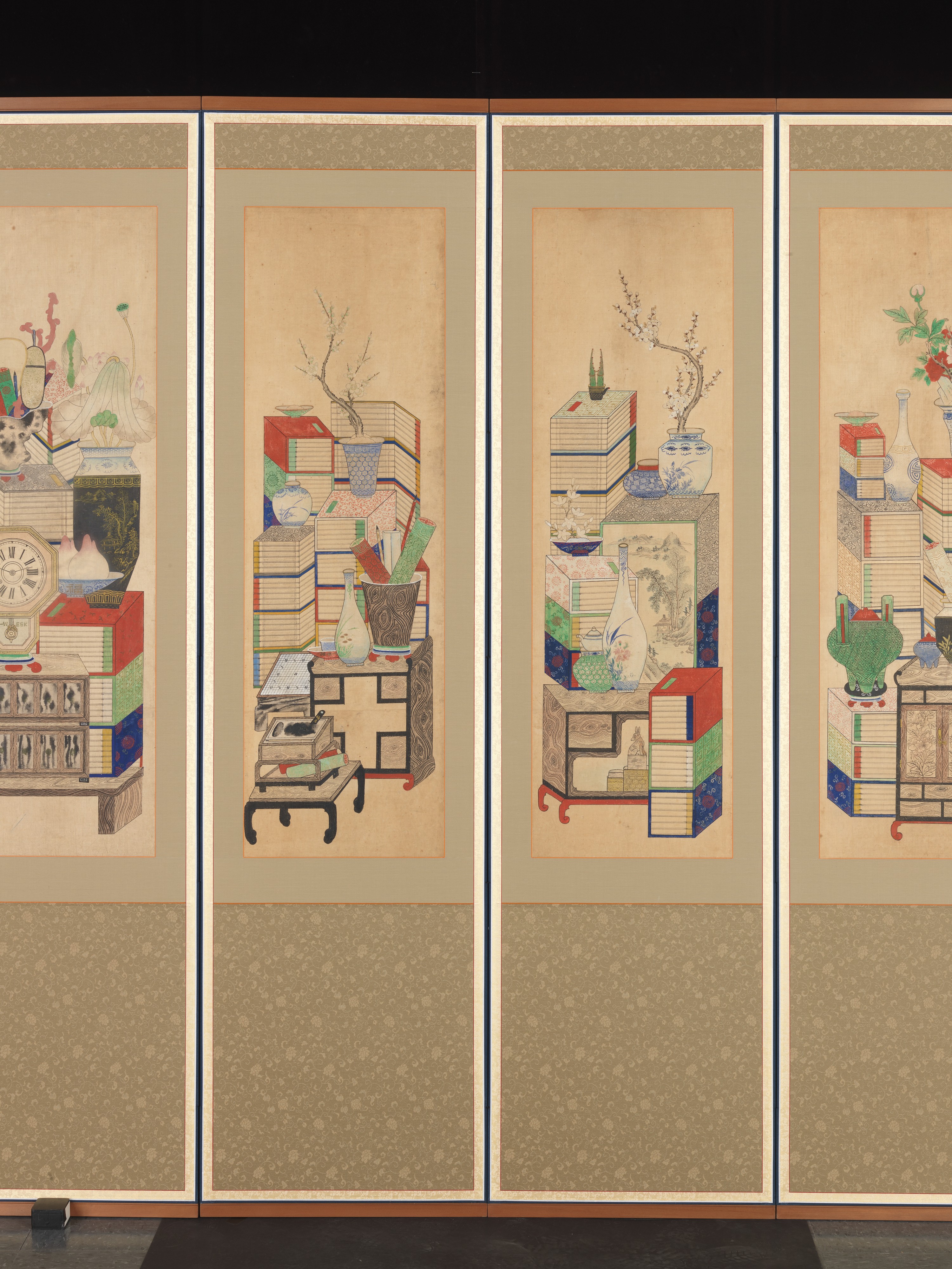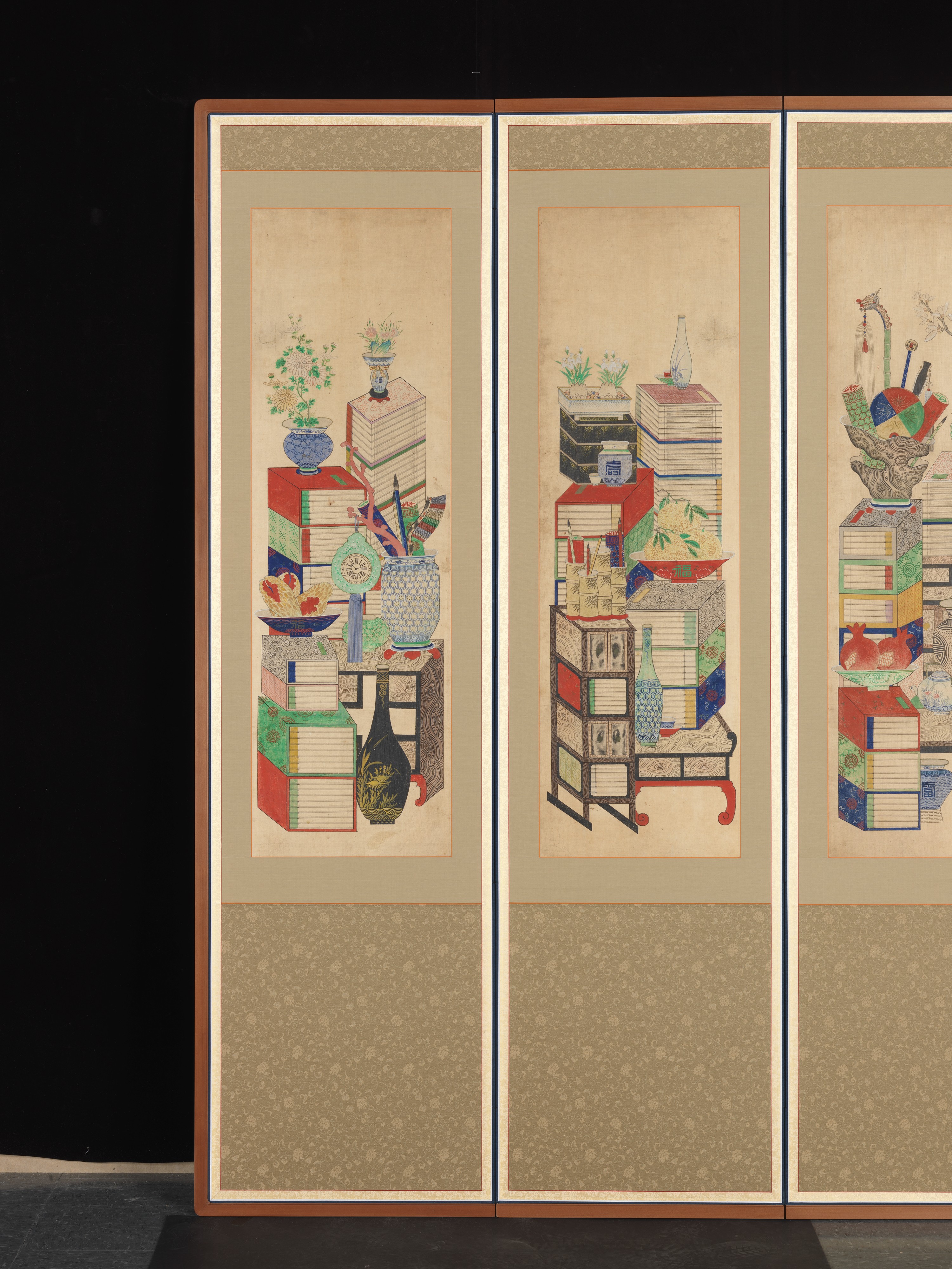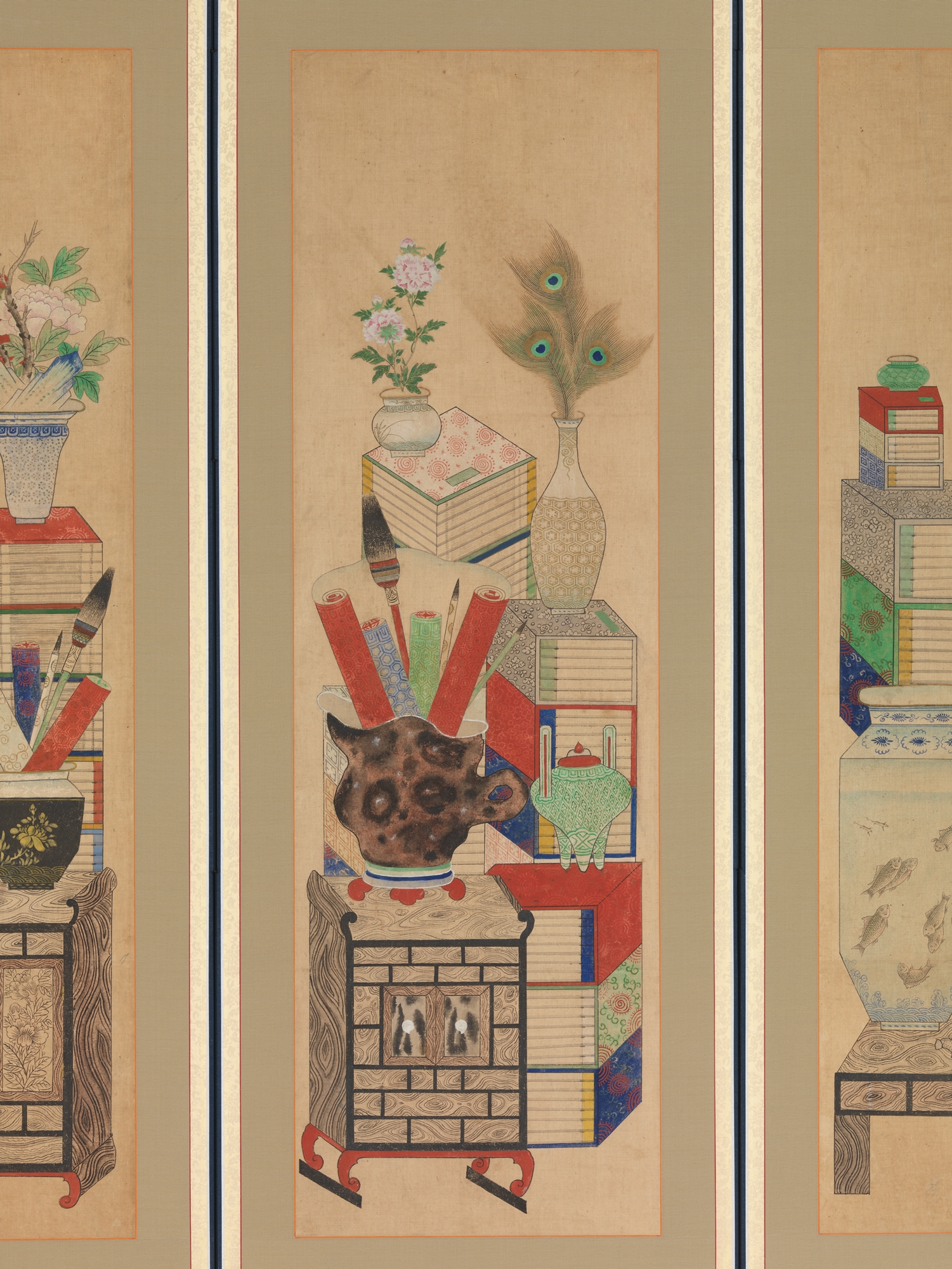Books and Scholars' Possessions
Not on view
Inspired by learning and connoisseurship, this screen belongs to a genre known in Korean as munbangdo (literally, "scholar's study painting," a still-life painting genre that emerged in the eighteenth century. Initially, such screens were commissioned for the royal court and were painted with trompe-l’oeil bookcases displaying books, imported luxuries, vessels, and collectibles. This screen is a wonderful example of the continuation and transformation of the genre in the late nineteenth and early twentieth centuries.
Each panel portrays an assemblage of neatly stacked volumes and other objects associated with scholarly activities, including paper, ink, brush, and ink stone as well as archaic bronze vessels, porcelain, fruits, flowering plants, and small pieces of furniture. Distinctive objects in this screen are (from right to left) three peacock feathers in a vase (panel 3), monochrome ink landscape paintings (panels 2 and 5), gold-painted black porcelain (panels 4, 7, and 10), a game board (panel 6), and a pendulum clock with Roman letter and numerals (panel 10). Two auspicious characters are repeated on vessels throughout the screen, one for longevity (壽 su in Korean; panels 1, 2, 8, and 9) and one for good fortune (福 bok in Korean; panels 1, 7, 9, and 10).
Due to rights restrictions, this image cannot be enlarged, viewed at full screen, or downloaded.
This artwork is meant to be viewed from right to left. Scroll left to view more.










